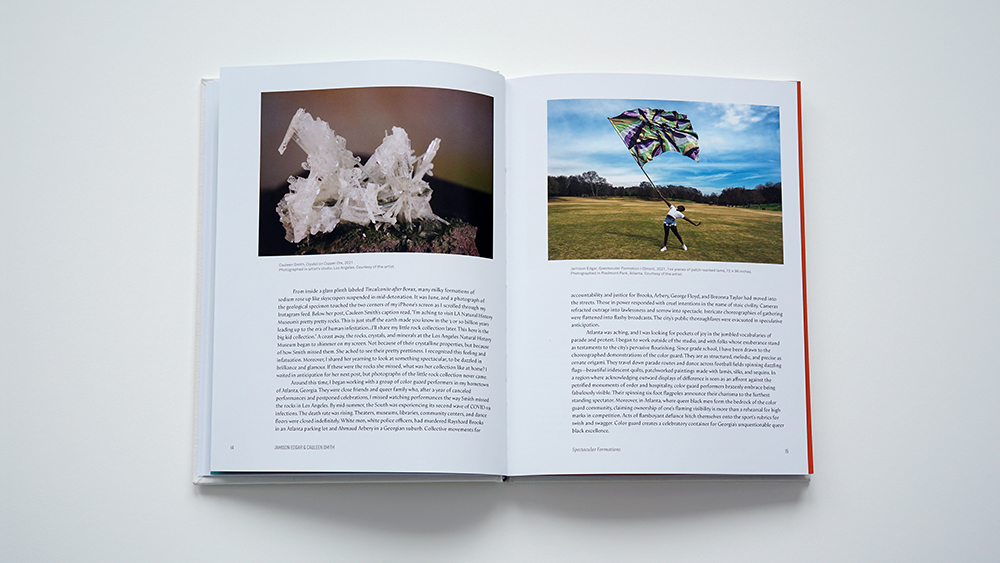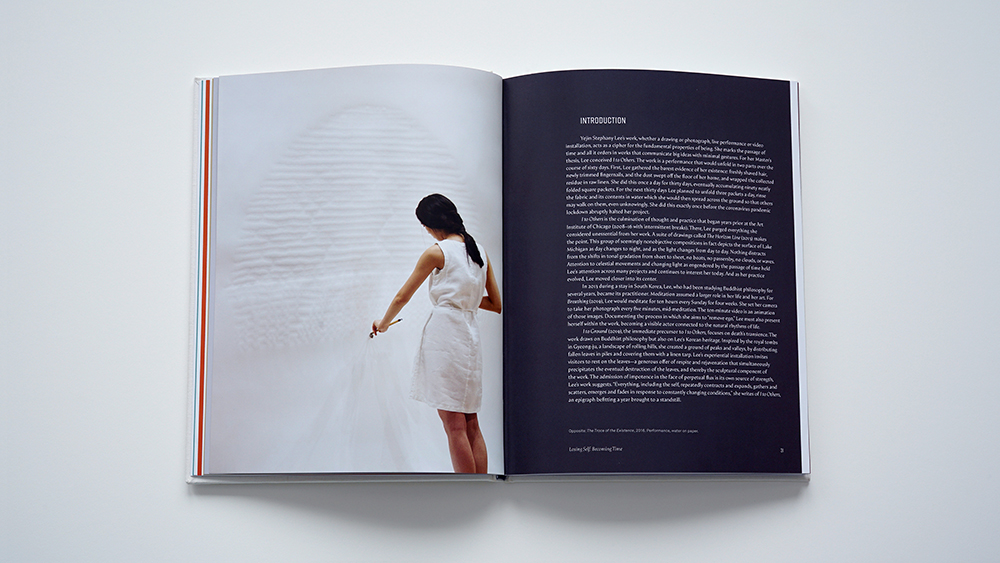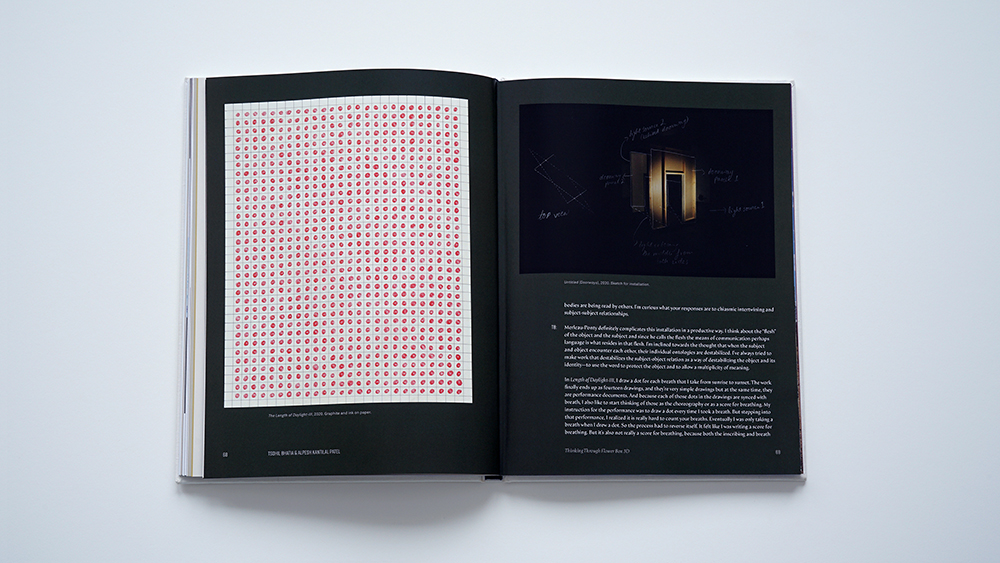
When the School of Art’s 2020 MFA thesis show was abruptly cancelled just 14 days before it was scheduled to open, the graduating class was left with a choice: abandon their unfinished projects and mount a hastily-organized online exhibition of old work, or re-envision what an art thesis could be. Choosing the latter, the students set out on an ambitious two-year book project in which they each worked with an established artist, curator, or scholar. This slow and considered approach gave the six graduates the time to process the monumental global upheaval of the pandemic and to either consider how their work is understood in new lights or to create new work that responds to this specific moment in our history.
The book, which is published by the Miller Institute for Contemporary Art and titled the thing that happens when the thing that is supposed to happen does not happen, includes essays, interviews and dialogues, and visual conversations between two artists’ works. By creating these pairings, this book creates a nuanced view of each student’s art practice within larger social and cultural contexts of our time. Not only do these pairings provide key context for the work of the emerging artists of the 2020 MFA cohort, they provide new insights into established artists’ practices.
CMU’s three-year MFA program emphasizes in-depth dialogue and exchange with a myriad of visiting artists, curators, critics, scholars and other creatives and intellectuals. The thing that happens is a natural extension of this pedagogical mentor/mentee philosophy, which seeks to constantly challenge students to consider how their work functions outside the academy and traditionally-defined artworld. By pairing these six emerging artists with established practitioners and scholars, this book reaffirms the importance of artists’ connections with one another in a time of physical and social isolation.
The thing that happens was made possible by a generous grant from the Tomayko Foundation.
Brief synopsis of sections:
Post Studio
In her introduction Ingrid Schaffner, curator of the Chianti Foundation, provides a context for this unique moment in our history, when students “left their studios in especially poignant and transitory states of ruin.”

Spectacular Formations
In an essay, Jamison Edgar reflects on his exchanges with filmmaker and multimedia artist Cauleen Smith about finding the spectacular in Smith’s rock collection and his own fascination with color guards in an age of spectacles of violence and nationalism.

Losing Self: Becoming Time
Yejin Stephany Lee speaks with Paulina Pobocha, Associate Curator in the Department of Painting and Sculpture at MoMA, about how Lee’s work gives form to the universality of impermanence.

Why We Archive
Paper Buck and multimedia artist Wendy Red Star talk about how archives help them both move beyond the myth-making and amnesia so present in American history in order to develop a more nuanced view of family, identity, and culture.

Thinking Through Flower Box 3D
Tsohil Bhatia speaks with art historian and theorist Alpesh Kantilal Patel about making meaning on the periphery and the trappings of simplistic readings of identity.

Wide Open
In a photographic essay, Michael Neumann and printmaker Tony Clough consider the vast American landscape.

Aesthetic AF
Tayla Petrillo speaks with independent writer, critic, and curator Wendy Vogel about how Petrillo’s sculptural practice gives form to the effects of social media and mass popular culture within the domestic sphere.
The book is available by contacting schoolofart@cmu.edu.




